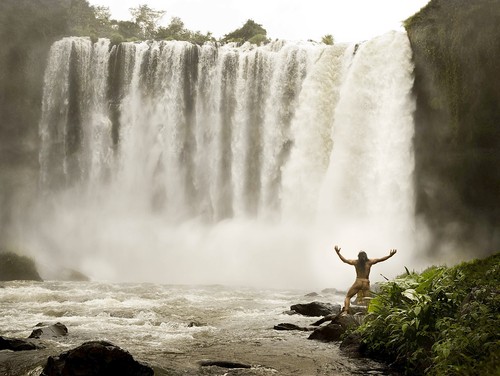The Maya language used in “Apocalypto” is Yucatecan. Yet the film is obviously set in the “Classic Maya” era, as both the lush rainforest setting and the architecture and costumes of the sets indicate. The language spoken in the Classic Maya city-states was Cholan, not Yucatecan. And the linguistic error is compounded by a blatant glitch in elementary chronology.
It was necessary to place the action in the Classic era in order to have the spectacle of elaborate stone city-states in the jungle. But the Classic civilization flourished from roughly 300 to 900 CE--making nonsense of the film's premise of the Spanish conquistadors arriving to deal a declining civilization a coup de grace. After the decline of the Classic city-states in what is now the Peten rainforest of Guatemala and Chiapas, there was a “Late Maya” renaissance in the Yucatan Peninsula to the north. The Late Maya would have spoken something akin to today's Yucatecan. But the environment in the Yucatan is savanna, not the lush jungle portrayed in the movie. And Gibson's sets are clearly modeled on the Classic sites, especially Tikal. Furthermore, the Late Maya cities also collapsed after around 400 years--that is, at least a century before the arrival of the Spanish. There were no major Maya ceremonial city-states still inhabited when Cortez appeared on the Yucatan coast in 1519.


2 comments:
One doesn't have to be Native to post a valid critique, of course. In fact, a little distance sometimes helps.
I agree Weinberg could've dug a bit deeper on the language issue. Were any Cholan speakers available? If not, would he have wanted the actors to speak English instead of Yucatecan?
It's not a big problem, but it suggests Gibson's stereotypical thinking. To him, the Maya are like the Aztecs and one Maya language is like another.
If you're going to use the Maya's language, you might as well use the right one. If not, you might as well do the film in English.
Post a Comment